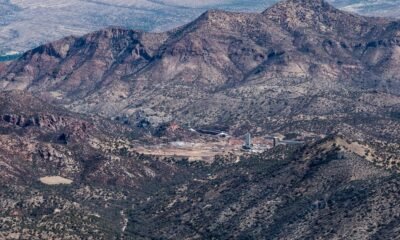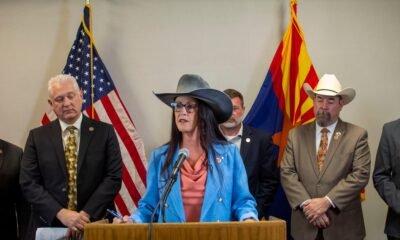arizona
Hobbs Supports Tribe’s Push for Fresh Environmental Review of Pinyon Plan Mine

Arizona Governor Katie Hobbs has formally requested that the U.S. Forest Service initiate a new environmental review of the Pinyon Plain Mine, a move long advocated by the Havasupai Tribe. This request highlights ongoing concerns within Indigenous communities regarding the mine’s potential impact on sacred sites and local safety.
In her communication with the federal agency, Hobbs emphasized her commitment to collaborating with Tribal nations, noting the historic and ongoing harms caused by uranium mining to these communities. “The safety of their communities and the integrity of their sacred sites are threatened by this mine,” she stated.
Located in Kaibab National Forest, the Pinyon Plain uranium mine occupies ancestral lands of several tribes, including the Navajo Nation and the Hopi Tribe. Its Environmental Impact Statement was last updated in 1986, with the current operational plan dating back to 1984. Hobbs’s appeal comes as the Havasupai Tribe continues to express deep concerns about potential contamination of their drinking water supply and sacred cultural sites.
Officials from the Havasupai Tribe have described the mine as a direct threat to Havasu Creek, the village’s sole water source, and other natural resources. Despite a lengthy legal campaign against the mine, efforts to halt operations have not yet succeeded.
During a visit with the Havasupai, Hobbs learned of the fear that many community members feel regarding contamination risks associated with the mine. “Red Butte Mountain, a site of great significance to the tribe, is particularly at risk,” she noted. This area is federally recognized as a Traditional Cultural Property and eligible for inclusion in the National Register of Historic Places.
The 17-acre mine is currently owned by Energy Fuels Resources, Inc., a prominent uranium producer in the U.S. Operations at the site resumed last year. On July 30, the company transported uranium ore to a processing facility in Utah, which raised additional alarm among tribal members due to the chosen transport routes traversing several tribal lands.
In response to these developments, Havasupai Tribal Chairwoman Bernadine Jones expressed gratitude for Hobbs’s support in the ongoing effort to secure a new environmental review from the U.S. Forest Service. She reiterated the tribe’s commitment to fighting against the mine’s operations, underscoring the need for protective measures around their water sources.
Emphasizing the importance of updated scientific evaluations, Attorney General Kris Mayes also recently reached out to the Forest Service, pointing out that the last environmental impact study was conducted nearly 40 years ago. “Advancements in science necessitate a supplemental study to accurately assess the current risks,” Mayes stated, highlighting the potential consequences of inaction on local communities and ecosystems.
This community-driven push for renewed scrutiny of the Pinyon Plain Mine underscores a larger dialogue about environmental justice and the rights of Indigenous peoples. For Governor Hobbs, the decision to support the Havasupai Tribe arises from a dedication to protecting Arizona’s resources and honoring the concerns of its Indigenous populations.


















